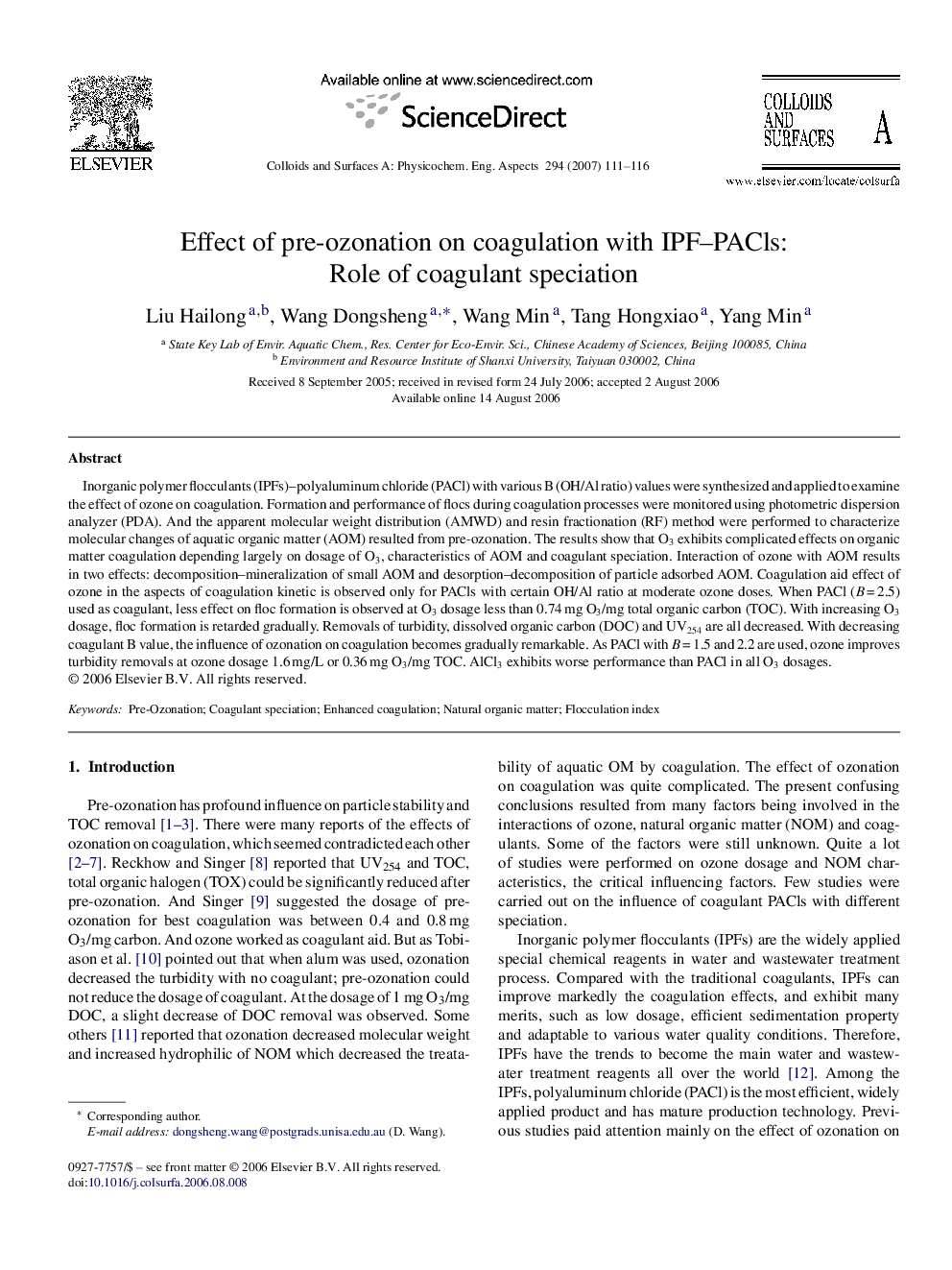| Article ID | Journal | Published Year | Pages | File Type |
|---|---|---|---|---|
| 597991 | Colloids and Surfaces A: Physicochemical and Engineering Aspects | 2007 | 6 Pages |
Inorganic polymer flocculants (IPFs)–polyaluminum chloride (PACl) with various B (OH/Al ratio) values were synthesized and applied to examine the effect of ozone on coagulation. Formation and performance of flocs during coagulation processes were monitored using photometric dispersion analyzer (PDA). And the apparent molecular weight distribution (AMWD) and resin fractionation (RF) method were performed to characterize molecular changes of aquatic organic matter (AOM) resulted from pre-ozonation. The results show that O3 exhibits complicated effects on organic matter coagulation depending largely on dosage of O3, characteristics of AOM and coagulant speciation. Interaction of ozone with AOM results in two effects: decomposition–mineralization of small AOM and desorption–decomposition of particle adsorbed AOM. Coagulation aid effect of ozone in the aspects of coagulation kinetic is observed only for PACls with certain OH/Al ratio at moderate ozone doses. When PACl (B = 2.5) used as coagulant, less effect on floc formation is observed at O3 dosage less than 0.74 mg O3/mg total organic carbon (TOC). With increasing O3 dosage, floc formation is retarded gradually. Removals of turbidity, dissolved organic carbon (DOC) and UV254 are all decreased. With decreasing coagulant B value, the influence of ozonation on coagulation becomes gradually remarkable. As PACl with B = 1.5 and 2.2 are used, ozone improves turbidity removals at ozone dosage 1.6 mg/L or 0.36 mg O3/mg TOC. AlCl3 exhibits worse performance than PACl in all O3 dosages.
